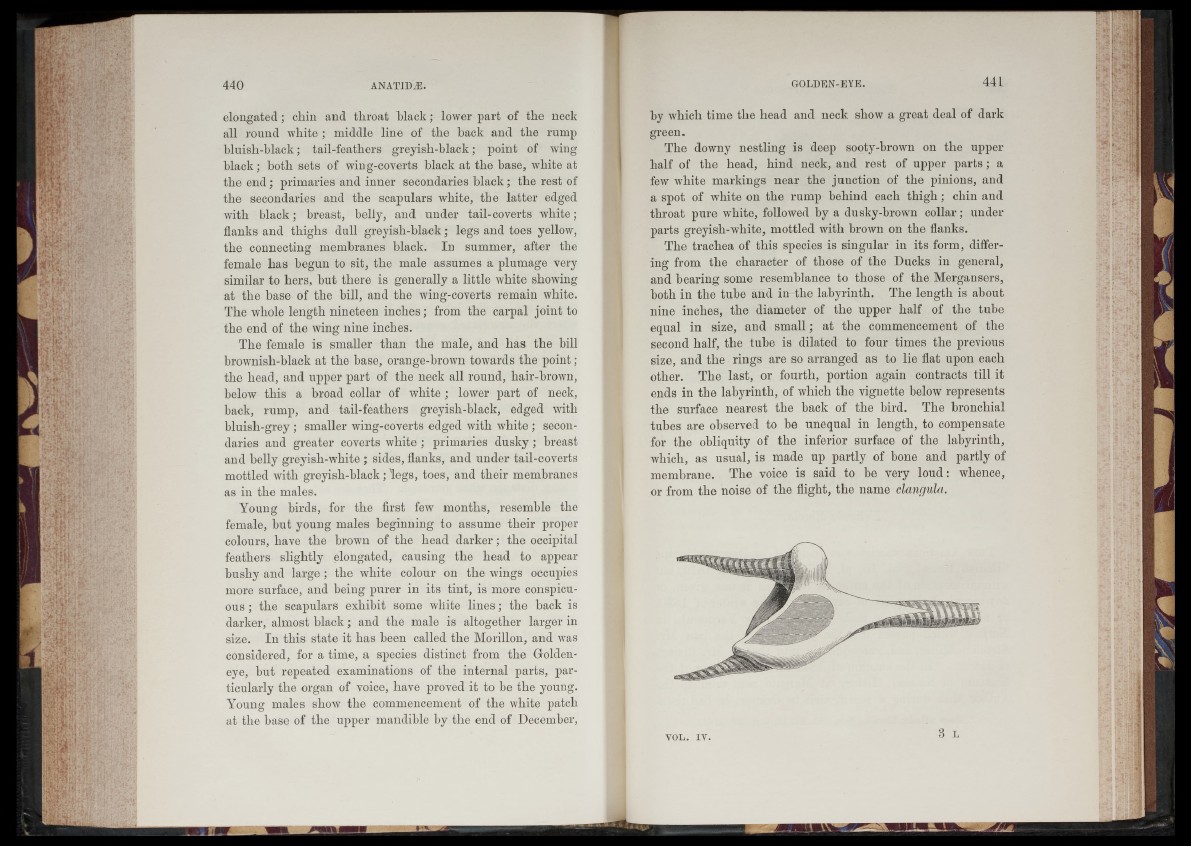
elongated ; chin and throat black; lower part of the neck
all round white ; middle line of the back and the rump
bluisli-hlack; tail-feathers greyish-black; point of wing-
black ; both sets of wing-coverts black at the base, white at
the end; primaries and inner secondaries black; the rest of
the secondaries and the scapulars white, the latter edged
with black; breast, belly, and under tail-coverts white;
flanks and thighs dull greyish-black; legs and toes yellow,
the connecting membranes black. In summer, after the
female has begun to sit, the male assumes a plumage very
similar to hers, but there is generally a little white showing
at the base of the bill, and the wing-coverts remain white.
The whole length nineteen inches; from the carpal joint to
the end of the wing nine inches.
The female is smaller than the male, and has the bill
brownish-black at the base, orange-brown towards the point ;
the head, and upper part of the neck all round, hair-brown,
below this a broad collar of white ; lower part of neck,
back, rump, and tail-feathers greyish-black, edged with
bluish-grey ; smaller wing-coverts edged with white ; secondaries
and greater coverts white ; primaries dusky ; breast
and belly greyisli-white ; sides, flanks, and under tail-coverts
mottled with greyish-black; 'legs, toes, and their membranes
as in the males.
Young birds, for the first few months, resemble the
female, but young males beginning to assume their proper
colours, have the brown of the head darker; the occipital
feathers slightly elongated, causing the head to appear
bushy and large ; the white colour on the wings occupies
more surface, and being purer in its tint, is more conspicuous
; the scapulars exhibit some white lines; the back is
darker, almost black; and the male is altogether larger in
size. In this state it has been called the Morillon, and was
considered, for a time, a species distinct from the Goldeneye,
hut repeated examinations of the internal parts, particularly
the organ of voice, have proved it to be the young.
Young males show the commencement of the white patch
at the base of the upper mandible by the end of December,
by which time the head and neck show a great deal of dark
green.
The downy nestling is deep sooty-brown on the upper
half of the head, hind neck, and rest of upper parts; a
few white markings near the junction of the pinions, and
a spot of white on the rump behind each thigh; chin and
throat pure white, followed by a dusky-brown collar; under
parts greyisli-wliite, mottled with brown on the flanks.
The trachea of this species is singular in its form, differing
from the character of those of the Ducks in general,
and bearing some resemblance to those of the Mergansers,
both in the tube and in the labyrinth. The length is about
nine inches, the diameter of the upper half of the tube
equal in size, and small; at the commencement of the
second half, the tube is dilated to four times the previous
size, and the rings are so arranged as to lie flat upon each
other. The last, or fourth, portion again contracts till it
ends in the labyrinth, of which the vignette below represents
the surface nearest the back of the bird. The bronchial
tubes are observed to he unequal in length, to compensate
for the obliquity of the inferior surface of the labyrinth,
which, as usual, is made up partly of bone and partly of
membrane. The voice is said to he very loud: whence,
or from the noise of the flight, the name clangula.
VOL. IV. 8 L